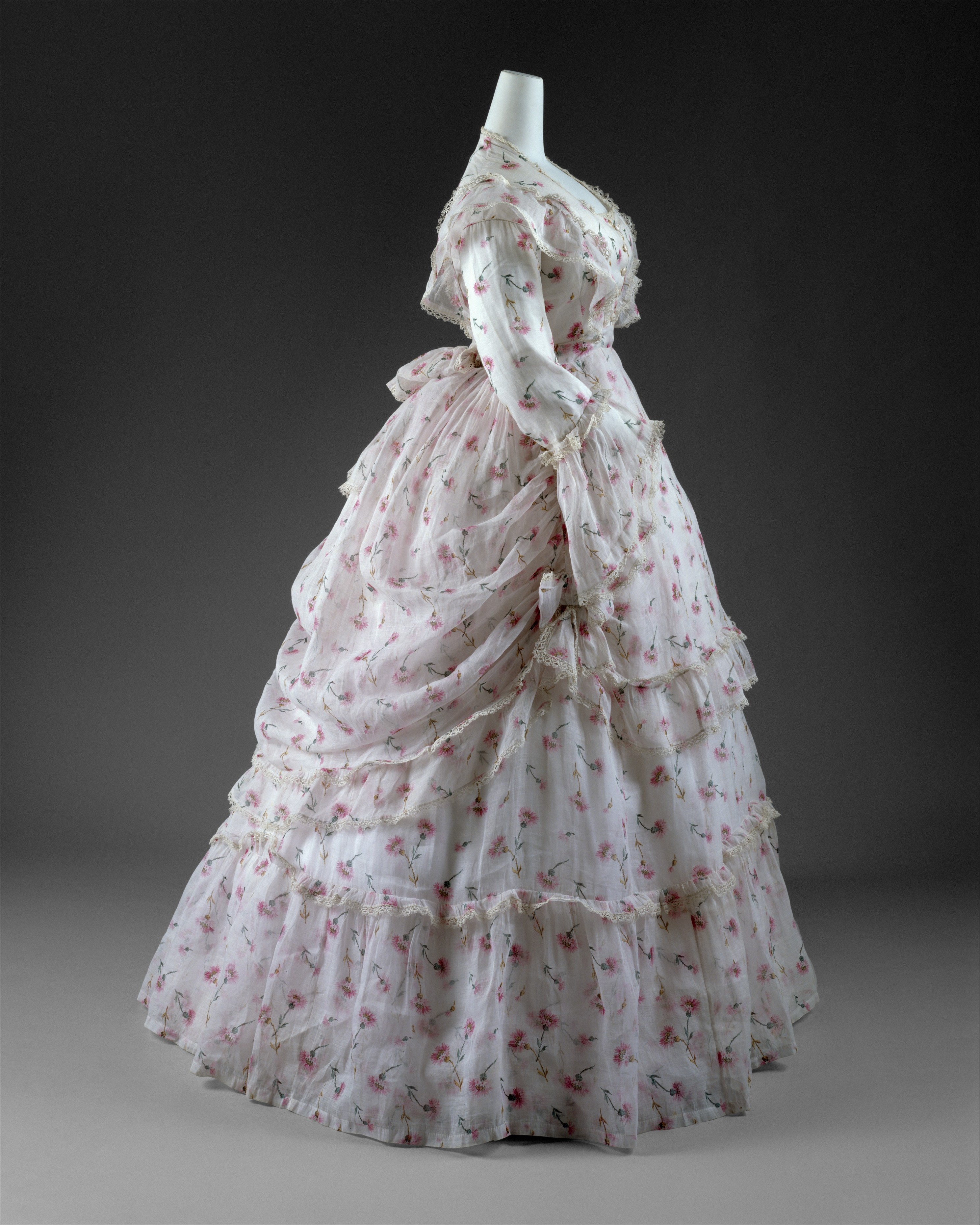Dress
Not on view
The 1870s was a period of marked romanticism and whimsy in fashionable dress. Much like the picturesque paintings of Renoir that depict such confectionary creations, both day and evening gowns were highly ornamented and often executed in delicate, feminine textiles. Though eveningwear was marked by décolleté necklines and lavish silk satins and taffetas, day dresses were made more modest with austere fabrics like cotton or wool. While many women owned walking and traveling dresses which afforded slightly greater moveability, also quite common was the summer day dress that was to be worn to an afternoon tea or reception.
This garment, emblematic of warm weather day dresses of the period with its sheer printed cotton and delicate lace trim, is a particularly pristine example, and notable for its clear revival of eighteenth–century aesthetic sensibilites. The late nineteenth century, abetted by the luxury and progress of the Industrial Age, recalled distinctly, both in its textiles and in the etiquette that surrounded fashionable dress, the notorious material excesses of the third quarter of the eighteenth century. The wealthy classes of the late–nineteenth–century showed a particular respect for the formalities of fashion. While their garments were not nearly as ornamental and their entertaining circles not as elitist, the decorative effects of late nineteenth century afternoon reception dresses such as this one unarguably echoed the lavishness of the eighteenth–century gown, most notably here in the sleeve and neckline.
Due to rights restrictions, this image cannot be enlarged, viewed at full screen, or downloaded.
This artwork is meant to be viewed from right to left. Scroll left to view more.



